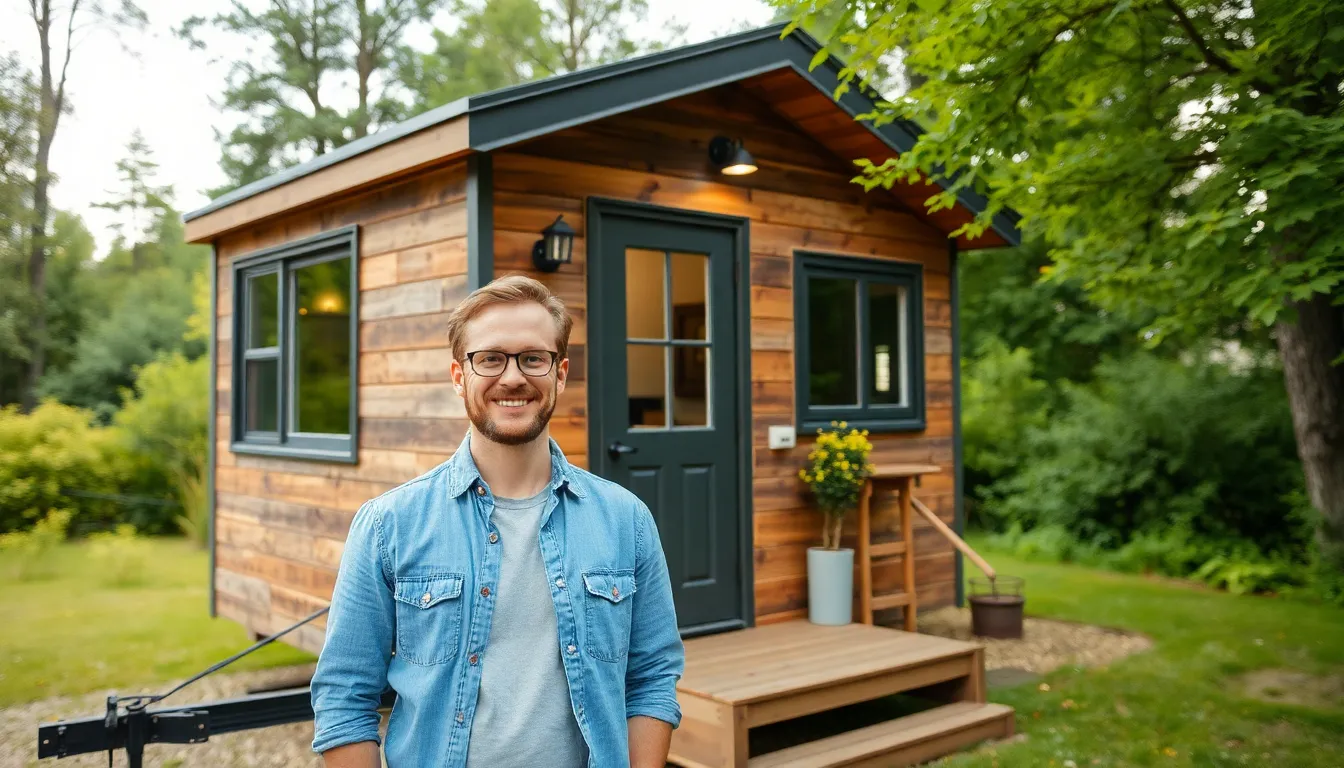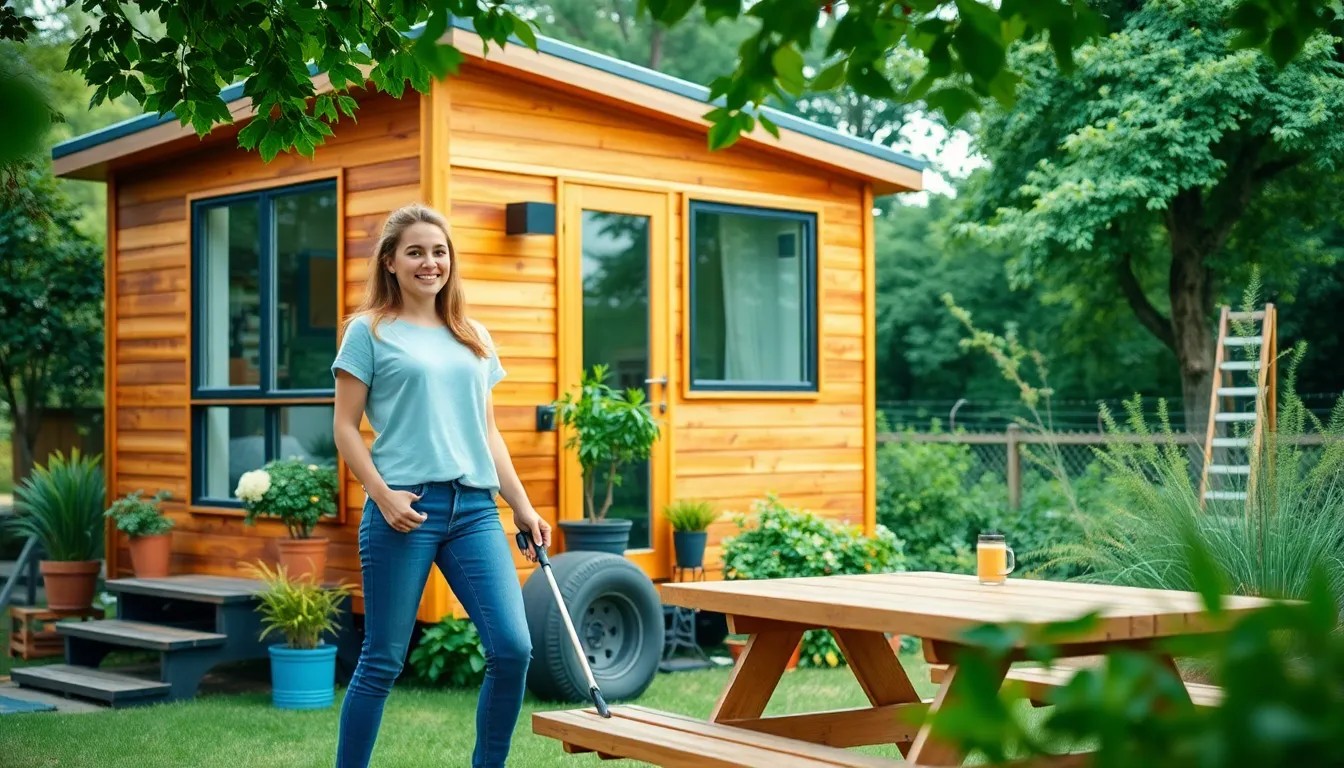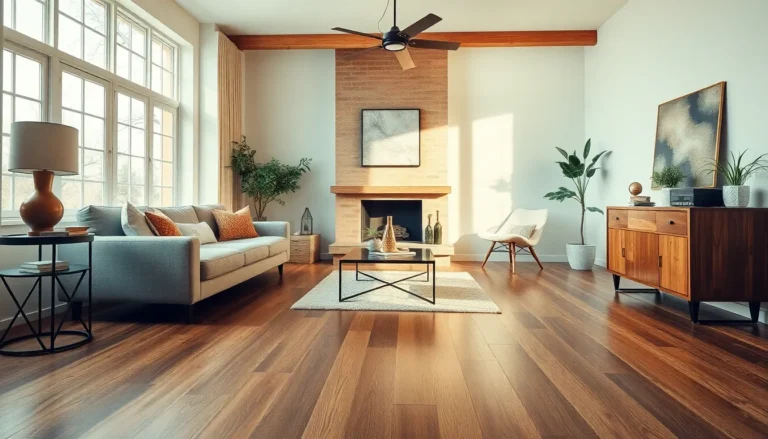Table of Contents
ToggleIn a world where bigger often seems better, tiny houses are flipping the script. These pint-sized marvels offer a clever solution to the housing crisis while embracing minimalist living. Who knew downsizing could be so liberating? Imagine trading in your sprawling mansion for a cozy nook that’s as stylish as it is functional.
Overview of Tiny House Solutions
Tiny house solutions provide innovative options for individuals seeking affordable housing alternatives. These compact dwellings often emphasize sustainability and energy efficiency, appealing to those who prioritize eco-friendly living. Flexible designs cater to various lifestyles, allowing homeowners to customize spaces according to personal preferences.
Comfortable functionality characterizes well-designed tiny houses. The clever use of space maximizes living areas, integrating features like foldable furniture, built-in storage, and multi-purpose rooms. Each design showcases creativity, enabling residents to live comfortably in smaller environments.
Cost savings represent another significant advantage. Individuals may spend significantly less on construction and maintenance compared to traditional homes. This affordability empowers many to achieve homeownership without extensive financial burdens.
Community building thrives within tiny house living. Cohousing developments encourage social interactions, allowing residents to share resources and support one another. Often, these communities foster a sense of belonging and collaboration.
Mobility is a crucial factor for some tiny house enthusiasts. Many opt for movable designs, allowing homeowners to transport their homes easily to different locations. This mobility enhances the lifestyle’s appeal, enabling residents to explore new environments.
Overall, tiny house solutions address the current housing crisis by offering practical, efficient, and sustainable living options. As more people seek simpler, more affordable lifestyles, these solutions continue to gain traction across urban and rural settings.
Benefits of Tiny Living

Tiny living offers numerous advantages that appeal to diverse lifestyles and values. Many individuals seeking affordability and simplicity recognize these benefits.
Financial Advantages
Cost savings represent a primary benefit of tiny living. Downsizing to a tiny house significantly lowers mortgage payments, often resulting in costs of $10,000 to $100,000 for the entire home. Reduced utility bills also contribute to long-term savings, with many tiny homes consuming less energy. Additionally, diminished property taxes lessen monthly expenses. Individuals can achieve financial freedom quicker, allowing them to allocate resources toward personal passions or investments. The elimination of clutter further streamlines spending, promoting a more intentional approach to purchases.
Environmental Impact
The environmental advantages of tiny houses are notable. Smaller homes consume fewer resources for construction while encouraging efficient use of space. Sustainability becomes easier with energy-efficient designs and eco-friendly materials. Many tiny houses utilize solar panels and composting toilets, decreasing negative environmental impacts. Water consumption drops due to smaller footprints, often leading to a reduced ecological footprint. By promoting minimalism, tiny living also inspires inhabitants to embrace sustainable lifestyles that prioritize conservation and environmental responsibility.
Design and Construction Options
Design and construction options for tiny houses provide a range of choices for potential homeowners. Different approaches cater to various budgets and lifestyles.
Prefabricated Tiny Houses
Prefabricated tiny houses streamline the building process. They consist of factory-built components assembled on-site, which reduces construction time. Commonly made from sustainable materials, these homes often feature energy-efficient designs. Prices for prefabricated tiny houses typically range from $20,000 to $75,000, making them accessible for many. Manufacturers offer several models and layouts, allowing buyers to select the best fit for their needs. Easy transportation enhances mobility, offering flexibility for those who wish to relocate in the future.
Custom-Built Tiny Houses
Custom-built tiny houses allow for personalization to meet specific requirements. Homeowners choose every detail, from layout to materials, resulting in a unique living space. Builders collaborate with clients to incorporate features like integrated storage and multifunctional furniture. The cost for custom-built tiny houses can vary widely, often starting around $30,000 and reaching up to $100,000 or more, based on materials and complexity. Enhanced design freedom allows individuals to create a space that truly reflects their lifestyle and preferences. Sustainable elements, such as solar power systems and rainwater harvesting, can also be integrated into custom designs, promoting eco-friendly living.
Zoning and Legal Considerations
Zoning laws and legal factors impact tiny house ownership considerably. Prospective homeowners must grasp local regulations to ensure compliance.
Understanding Local Regulations
Local regulations dictate where tiny houses can be placed. Different cities, counties, and states feature diverse zoning rules. Often, homes designated as accessory dwelling units (ADUs) fall under specific regulations that differ from standard houses. Some areas permit tiny homes on permanent foundations, while others allow only temporary placements. Local authorities typically define minimum square footage requirements for residential structures. Understanding these distinctions helps prevent legal issues down the line.
Navigating Permits
Obtaining the necessary permits is essential for tiny house construction. Licensing requirements vary by location, requiring homeowners to research and secure proper permits. Building permits often include inspections during the construction process. Many municipalities also require specific permits for utility hookups or septic systems. Heeding local guidelines streamlines the development, ensuring homeowners avoid fines and penalties associated with non-compliance. Overall, proactive engagement with zoning and permitting authorities leads to smoother transitions into tiny house living.
Community and Lifestyle
Tiny house living fosters a strong sense of community and promotes a minimalist lifestyle. Residents often form bonds through shared experiences and mutual goals, enhancing social connections.
Tiny House Communities
Tiny house communities provide an ideal setting for like-minded individuals seeking simplicity. Cohousing setups cultivate interactions, encouraging collaboration and communal activities. Many communities organize events that strengthen relationships among residents. These neighborhoods often include shared amenities such as gardens or recreation areas. Living in a tiny house community typically reflects environmental consciousness and a commitment to sustainable practices.
Minimalist Living
Minimalist living transforms how individuals view possessions and space. This lifestyle emphasizes the importance of experiences over material goods. Downsizing promotes intentionality, resulting in reduced stress and increased clarity. Homeowners prioritize quality over quantity, curating essentials that enhance their daily lives. Clutter-free environments support mental well-being, fostering a peaceful atmosphere. Embracing minimalism naturally aligns with the principles of tiny house living, creating harmonious, efficient spaces.
Tiny house solutions present a compelling alternative to traditional housing. They not only address the housing crisis but also promote a lifestyle centered around sustainability and community. The appeal of minimalist living resonates with many who seek financial freedom and reduced environmental impact.
As individuals embrace the flexibility and innovative designs of tiny homes, they find opportunities to cultivate meaningful connections with neighbors. This lifestyle fosters a sense of belonging while encouraging intentional living.
Ultimately, tiny houses offer a pathway to a simpler life, proving that less can indeed be more. By prioritizing experiences over possessions, homeowners can enjoy a fulfilling life that aligns with their values and aspirations.







